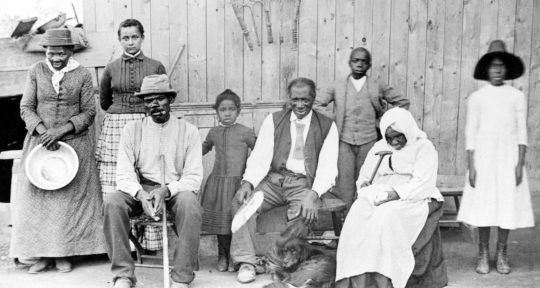I’ve always been in awe of people who can gaze up at the night sky and pick out the constellations and planets. As someone who can barely find the Big Dipper, I was intrigued when I heard about the world’s first open-air augmented reality planetarium, ObservÉtoiles, in Glen Sutton, Quebec.
Developed by Night Sky Odyssey—a collaboration between National Geographic and Jeremy Fontana, creator of award-winning campground and outdoor adventure spot Au Diable Vert, where ObservÉtoiles is located—the planetarium aims to introduce guests to our galaxy and the stories behind the stars through an educational, yet breathtaking show.
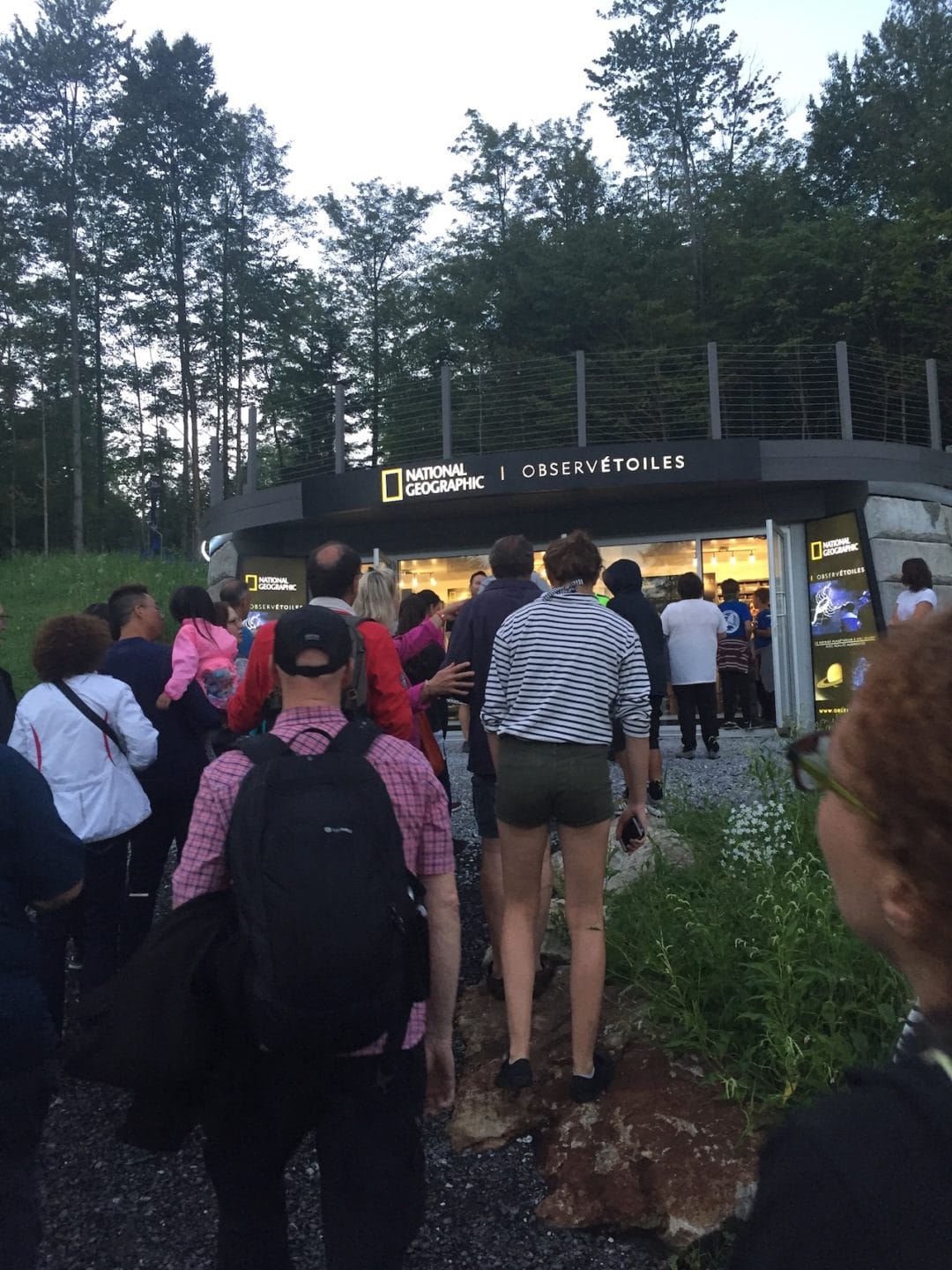
On the night my husband and I attended, an orange and pink summer sunset was blooming as we walked down the hill from our cliffside cabin at Au Diable Vert. We passed by other campers making the most of the fading day: grills fired up, the final soccer games of the day winding down, and logs stacked in campfires, just waiting to be lit for the nightly s’mores.
Unlike the previous evening’s sporadic trickle of cars maneuvering up the twisting mountain road, the stream of headlights shining through the trees bordering the parking lot showed that ObservÉtoiles was the place to be this Saturday night.
In fact, this was the case during its entire first season in 2018. Each Saturday night show was sold out, and the weekday shows nearly so, with more than 2,000 tickets booked in the first month alone, according to Julie Zeitlinger, co-owner of Au Diable Vert.
Augmenting a stellar reality
After collecting our cardboard headsets from the check-in booth, we climbed the stairs to the amphitheater. The multiple rows of stadium seating were already filling up, with people trying out their headsets, looking up and down and to the left and the right. The technology behind the show is a version of an app called Star Chart. Created by the Dutch company Aryzon, it runs on a smartphone inserted into the custom-designed headset and shows two programs: one with our solar system (featuring the Solar System 3D tour by Orrery) and the other showing the 88 constellations in our galaxy.
This augmented reality app doesn’t create a new, nonexistent world—that would be virtual reality. Instead, the app projects additional images and information on top of what we already see, thanks to the headset’s mirror system and Fresnel lenses.
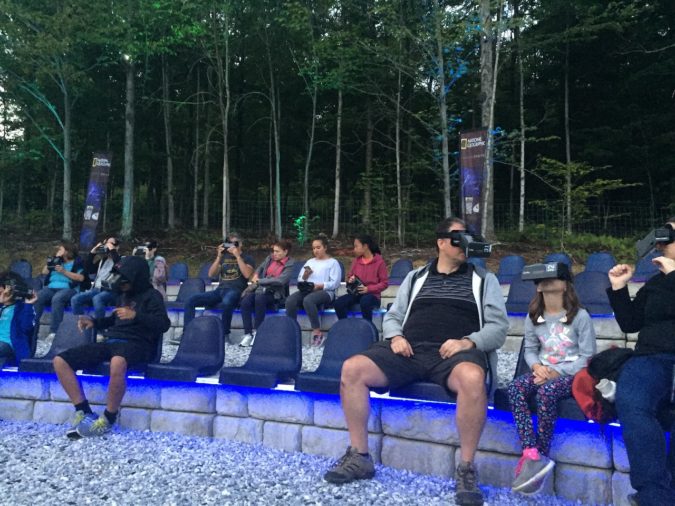
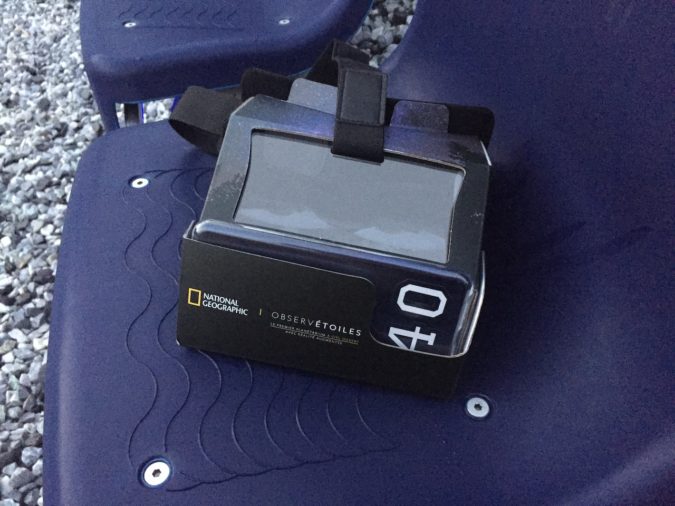
By the time the narrator for the night, an astronomer from the ASTROLab at nearby Mont Mégantic, took the stage, I had turned on my heated seat as a buffer against the cool night air. The sky was not yet completely dark, with only a few of the brightest stars visible.
The narrator began the show—which is written by Andrew Fazekas, also known as The Night Sky Guy and co-creator of ObservÉtoiles—with instructions for switching between the app’s two programs. A quick tilt of the head, either to the left or the right, toggled the display between the planets and the constellations. After getting our thumbs-up that we all could successfully change from one program to the other, he began a countdown: “Trois, deux, un…” At this point the entire crowd tilted our heads as one to begin the solar system show together.
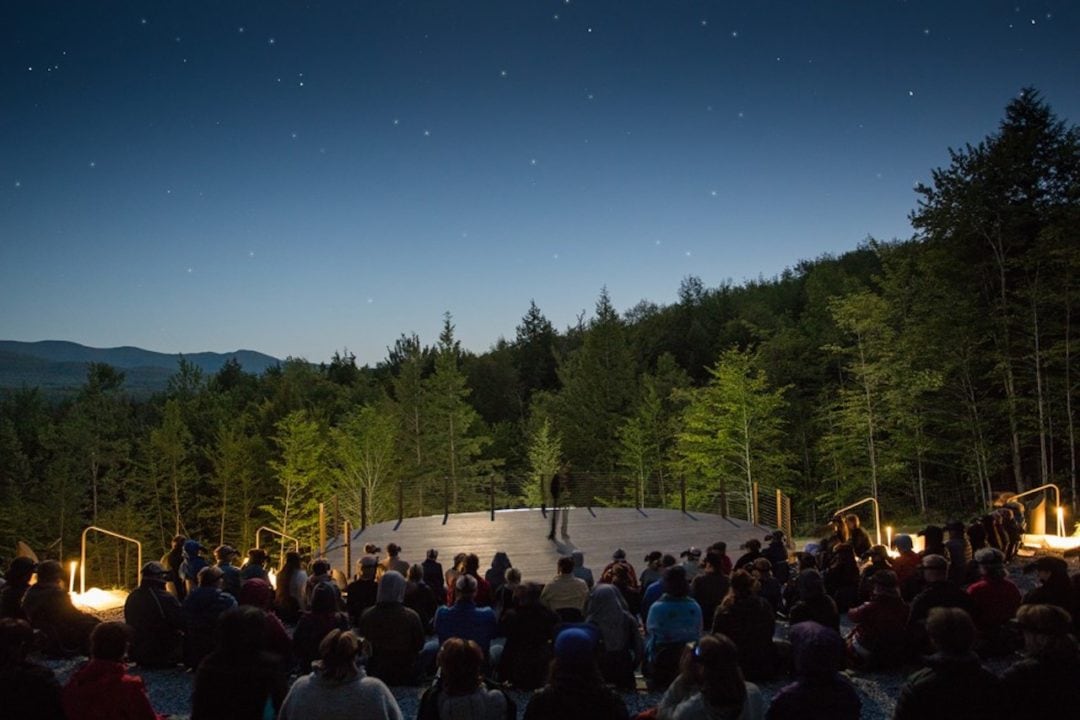
As the narrator told the story of each of the planets, we followed along, watching the spheres zoom into view, twirling in their digitally-enhanced world. From the rough surface of Mars to the nebulous swirls on Jupiter, we were transported through space to see these planetary wonders up close.
With another head tilt, we were now seeing the constellations, illustrated with drawings by 17th-century astronomer Johannes Hevelius superimposed over the stars that make up each one. The sky was filled with mythical figures and wild beasts. Look to the east—there’s Virgo, the universe’s second-largest constellation. Look to the north—it’s Cassiopeia, the half-dressed queen seated on her throne. We gaped in wonder at each of the beautiful groupings while the narrator regaled us with the Greek and Roman myths behind each figure.
Beyond the stadium
As we took off our headsets at the end of the augmented reality program, gasps of awe were heard throughout the 180-person audience as we took in yet another astonishing display, complements of ObservÉtoiles’ silent third collaborator: Mother Nature. The sky of this newly appointed Canadian Dark Sky Preserve had completely darkened while we were engaged with the manmade portion of the show, revealing a glittering grand finale of stars as far as we could see.
The narrator brandished a laser pointer and picked out some of the planets and constellations that were visible in the south-facing darkness. Having just seen them clearly displayed through the headset, I could more easily see them in real life, especially with the bright laser line helping to differentiate one sparkly body from another.
Though I didn’t see any shooting stars that night, I did see satellites slowly making their way across the sky. The lack of airplanes flying overhead—Au Diable Vert has a permit to make this a no-fly zone during the shows—helped create the illusion that we were in ancient times, picking out the familiar figures in the sky.
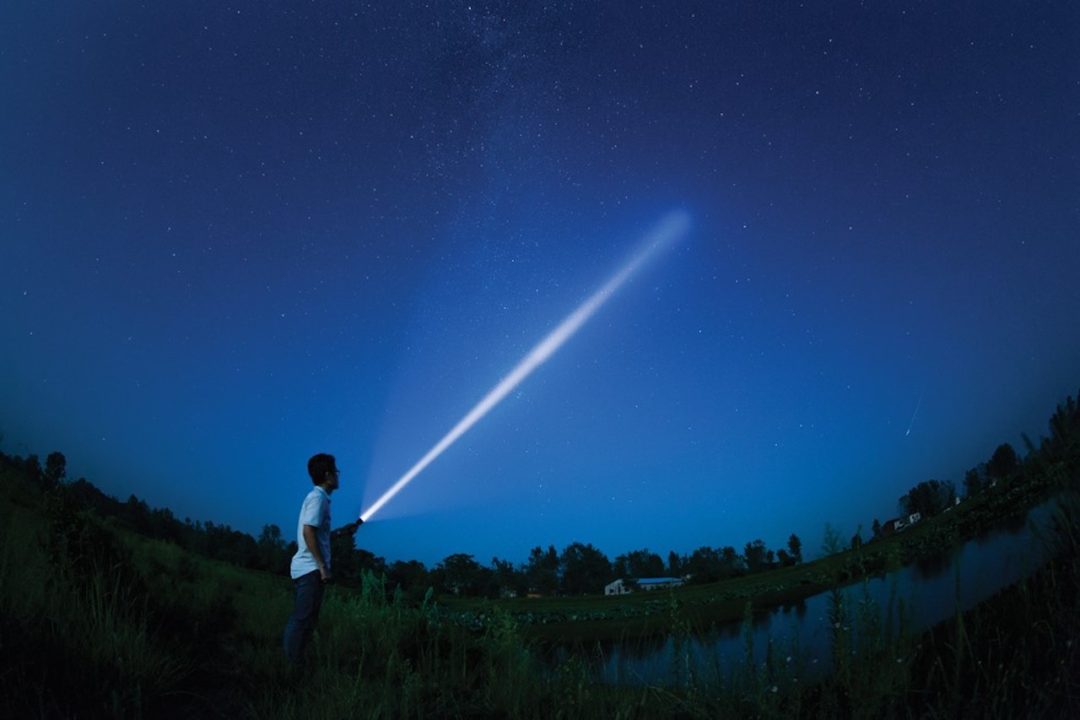
The show was over, and we climbed down from the amphitheater and turned in our loaner smartphones in exchange for a National Geographic/ObservÉtoiles–branded drawstring bag in which to store the headset, which was ours to keep. At home, I downloaded the same custom Star Chart app onto my own smartphone, following the instructions I received via email from Au Diable Vert.
Though my backyard isn’t nearly as dark as that south-facing mountain in the Eastern Townships, I can still don my headset and relive the wonder of seeing the constellations laid out before my eyes, or wander between Jupiter and the rings of Saturn, all without leaving the comfort of my deck chair.
If you go
ObservÉtoiles has shows every Tuesday night through August 31 and every Saturday night (and select Sunday nights) through October 12. The show still takes place if skies are not clear, but shows may be cancelled in the event of heavy rain. Book tickets for ObservÉtoiles on their website, and be sure to confirm the language of your selected show. The default language of most shows is French.


